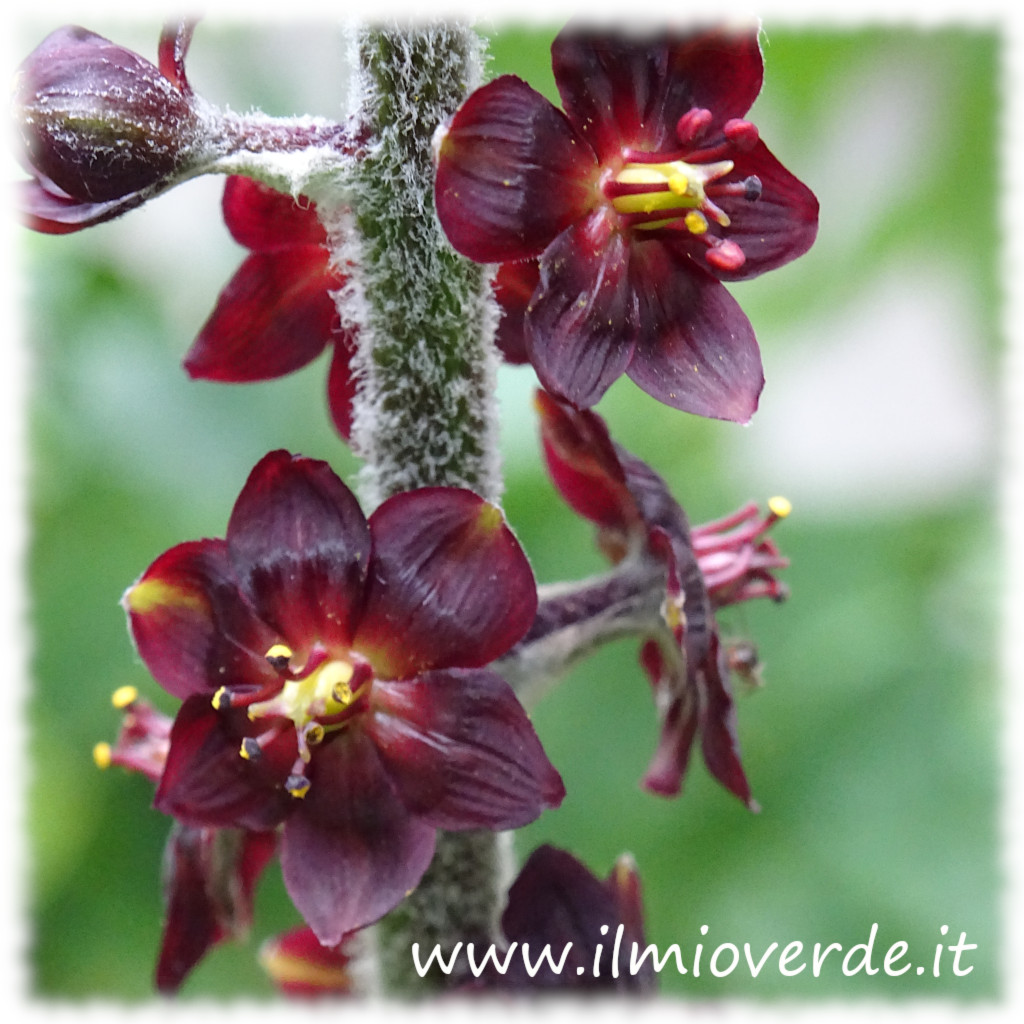Veratrum nigrum
The Veratrum nigrum, commonly known as black hellebore, is a perennial herbaceous plant belonging to the Melanthiaceae family. It grows naturally in the mountainous and hilly regions of Central and Eastern Europe. Known for its medicinal properties and wild beauty, this plant is also recognised for its high toxicity.
Origins and History
The name Veratrum is derived from the Latin words verus meaning “true” and atrum meaning “black”, clearly referring to the dark colour of its flowers. In the past, the plant’s roots were used in traditional medicine to treat various ailments, thanks to their stimulating and purgative properties. However, the use of this plant is highly discouraged without proper supervision, as it is extremely poisonous.
Description
The Veratrum nigrum is a plant that can reach heights ranging from 60 cm to 1.5 metres. It has wide, lanceolate leaves with a leathery texture and a rich green colour. Its inflorescences are panicles that can be up to 40 cm long. The flowers are a dark brown-purple colour, sometimes with greenish tints, and are arranged in dense clusters. Flowering typically occurs between late spring and summer.
Habitat and Cultivation
The Veratrum nigrum thrives in cool, moist soils, preferring shaded or partially shaded environments. It is found in mountainous, wooded areas and along the edges of watercourses, where the soil is rich in humus. Although the plant is resilient and adaptable, it is important to avoid direct and prolonged sun exposure, particularly in hotter regions.
Care and Maintenance
Being a plant that favours cool and moist soils, Veratrum nigrum requires regular watering, especially during the warmer periods of the year. The soil should be well-drained to prevent waterlogging, which could damage the roots. During the winter months, it is advisable to reduce watering, allowing the plant to rest.
Toxicity
One of the most significant characteristics of Veratrum nigrum is its toxicity. The plant contains poisonous alkaloids, particularly veratrine, which is highly toxic to humans and animals. Ingesting the roots or other parts of the plant can cause severe symptoms such as nausea, vomiting, diarrhoea, and, in extreme cases, cardiac arrest. For this reason, it is essential to handle this plant with caution and keep it out of reach of children and pets.
Traditional and Medicinal Uses
Despite its danger, Veratrum nigrum has a long history of use in folk medicine. The plant’s roots were used in small doses to treat conditions such as fever, digestive disorders, and respiratory diseases. In the past, preparations made from black hellebore were administered under strict medical supervision. However, its use is now limited due to the risks associated with its toxicity.
The Veratrum nigrum is a fascinating and mysterious plant that requires great care and respect. While it is a plant with notable aesthetic qualities, it is essential to handle it carefully due to its potential danger. It is suitable for those seeking a hardy and interesting plant for the garden, but only in environments where safety can be ensured.
Immagine di Davide Giuseppe Zannini
